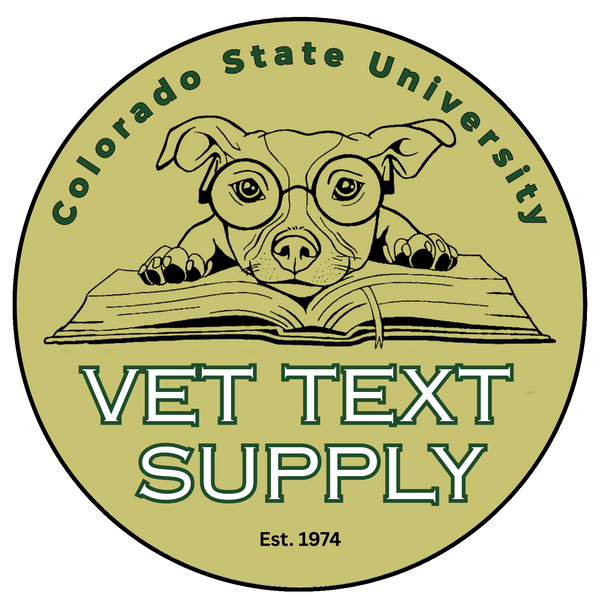Class of 2029 Spring Book List
Note: As of 2024, VetText will no longer be selling textbooks directly. The booklist below will be updated with new links for textbooks by mid-July. We apologize for any inconvenience.
VM 611 - Foundations of Veterinary Medicine II
- See Required Equipment/Supplies List below
VM 619 - Veterinary Neurobiology
Required:
C.E. Thomson, C. Hahn: Veterinary Neuroanatomy: A Clinical Approach, 1st Edition. Elsevier Saunders, 2012
ISBN: 9780702034824
Recommended:
de Lahunta’s Veterinary Neuroanatomy and Clinical Neurology, 5th Ed.
IBSN: 9780323696111
VM 623 – Veterinary Nutrition
None
VM637 - Veterinary Bacteriology & Mycology
RECOMMENDED:
McVey: Veterinary Microbiology, 3rd or 4th edition, Wiley-Blackwell, 2013, 2023
IBSN: 9781119650751
Can be assessed via CSU Library
VM638 - Veterinary Parasitology
RECOMMENDED:
Veterinary Parasitology, 4th ed., by Taylor, Coop & Wall (Wiley/Blackwell)
IBSN: 9780470671627
VM639 - Veterinary Virology
None
VM640 - Biology of Disease I
RECOMMENDED:
Pathologic Basis of Veterinary Disease. Zachary, 7th Ed., 2022
IBSN 9780323713146
Can be accessed via CSU Library
Pathology of Domestic Animals. Maxie et al 6th Ed., 2016
Volume 1: Introduction, Musculoskeletal, Nervous, Special Senses & Integument
IBSN 9780702053177
Volume 2: Alimentary, Liver, Pancreas, Urinary, Respiratory
IBSN 9780702053184
Volume 3: Cardiovascular, Hematopoietic, Endocrine, Genital
IBSN 9780702053191
Links to chapter are provided on the syllabus
VM648 - Food Animal Production & Food Safety
REQUIRED:
Jeff Benedict: Poisoned – The True Story of the Deadly E. Coli Outbreak that Changed the Way Americans Eat, February Books, 2011.
ISBN:9780984954353
RECOMMENDED:
Field and Taylor, Scientific Farm Animal Production, 12th ed. Pearson, 2019.
ISBN: 9780135187258
ELECTIVES:
VM621 - Exotic Animal Anatomy & Husbandry
None
VM612 - Healer's Art
- GOOD RESOURCES:
- Rachel Naomi Remen: Kitchen Table Wisdom
- Rachel Naomi Remen: My Grandfather's Blessings
REQUIRED EQUIPMENT/SUPPLIES:
- Blue Clinic Smock
- Stethoscope
- Neuro Kit - pen light , mosquito hemostats, percussion hammer
- Coveralls and Overboots
